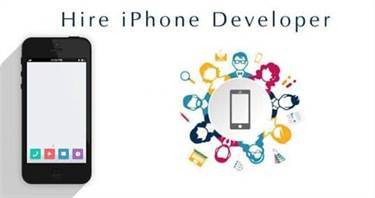And what makes this even more interesting is that it benefits both the non-financial institution and financial institutions. To offer these services, Lyft entered a BaaS partnership with Stride Bank. Stride handles all the back-end transactions such as providing the debit card, managing the money flow through the driver’s account, and maintaining regulatory requirements.

Probably the most advanced platform for the banks is the payments platform, which created a change in the way payments are made. It has been responsible for making payments cheap, real-time, fast, and simple enough to complete on a mobile device. Numerous examples of payments platforms abound, with the most prominent being PayPal, Square, and Apple Pay. The platform model is based on connection rather than control. Outside of banking, familiar companies like Airbnb and Uber use this to run scalable, cost-effective operations that connect consumers directly to the services they want. Banking as a Service (“BaaS”) with Webster Bank puts FinTechs and other non-banks in a position to digitally deliver customized banking and payment services, and enhance their customer experience.
The following documentation may also be required:
Credit cards, credit lines and loans are subject to credit approval and creditworthiness. Latforms like RazorpayX have enabled businesses like Cure.fit, MPL, Dunzo, and more, to make payouts at scale while keeping the costs low. These are some among several upcoming BaaS companies available for users globally. Now that we know a bit about the BaaS world, let’s explore its trends in the next section. In the next sections, we’ll get into some of the biggest brands offering BaaS solutions. So, how can banks catch up to all the digital options popping up daily?

Finally, there may be times when you have questions or need assistance that it is just easier to get in person. If you can visit a branch and meet with someone face-to-face, that can be much simpler — and sometimes much more likely to lead to a resolution to your issues — than calling a faceless customer service person. It can also be more convenient to manage your safe deposit banking as a service and banking as a platform box at a financial institution where you have other relationships as well. Capital Loans are issued by Celtic Bank, a Utah-Chartered Industrial Bank, Member FDIC. All loans subject to credit approval. To learn more about relationship-based ads, online behavioral advertising and our privacy practices, please review Bank of America Online Privacy Notice and our Online Privacy FAQs.
Business Savings
In such a constellation, FinTech banks are enabled to compete directly with banks by offering core-banking services without having to build all the products that would be needed. The API-based bank as a service platform serves as the back-end that hosts standalone independent FinTech startups and integrates seamlessly with any existing back-office of traditional banks. This allows non-banks to easily and cost-effectively launch additional financial products and expand into additional markets.
Our size, capital and liquidity levels afford you the ability to expand and scale at a comfortable pace, with ample room for future balance and relationship growth. You can be assured data is protected with a high level of security, plus deposit accounts are FDIC insured to the highest possible limit. Using BaaS, you could order a pizza from your video game console.
Explore personal banking
In that world, achieving long-term differentiation with BaaS will be difficult, so banks will continue to distinguish themselves based on products, rates, reach, and other dimensions. Another possibility is that the market will be prone to returns to scale, much as cloud computing is dominated by big players. If this winner-take-all dynamic prevails, a few BaaS providers that are ahead of the pack in technology, analytics, and cost structure will likely form insurmountable advantages in the space. They allow your customers to deposit and withdraw funds, as well as make and receive payments. One of the main advantages of bank accounts over similar solutions (e.g., digital wallets) is that they may be insured up to $250,000 by the Federal Deposit Insurance Corporation. According to Bain & Company, tech companies could realize $51 billion in new revenue by offering embedded financial products—including those powered by banking as a service—by 2026.
- We can help you explore your options for leveraging BaaS platforms and embedded finance solutions.
- These various financial services are all related to dealing with money—accessing it, storing it, spending it, and moving it—so your systems need to be able to talk to each other and pass important customer information.
- Because everything is in one system, you don’t have to worry about complicated funds management and customers only have to share their information once, during onboarding, to access a variety of different financial services.
- With BaaS business models, on the other hand, the bank offers the core platform and third parties build apps and functionalities on this platform.
- Others include Bond, Solid, Treasury Prime, Stripe Treasury, Moov, Synctera, and Column.
Banking-as-a-service, or BaaS, is a great opportunity for existing banks, insurers, and wealth managers to reach a greater number of customers at a lower cost by teaming up with non-financial businesses. But if they do not react in a rapid, strategic manner, BaaS could also pose a threat, as it opens up the financial services market to new challengers. Incumbent banks and other financial institutions need to make strategic decisions about how to enter this growing business – what products to offer and which partners to work with. The BaaS model begins with a fintech, digital bank, or other third-party provider paying a fee to access the BaaS platform.
Banking as a Service: A $25 Billion Opportunity for Banks
Banks will offer fintechs access to their resources through APIs. Examples of BaaS include credit card rewards programs that pay cash back on certain types of purchases, or airline rewards programs that serve up discounted — and even free — flights to those who travel frequently. A major advantage of this approach is that it encourages customer loyalty in a fiercely competitive landscape. FinTechs are largely responsible for these features, and it’s an avenue they need to pursue in order to stay competitive. At its core, open banking is about access to data—and that complements our core competency. Gain a competitive edge in portfolio management with timely and comprehensive de-identified data analytics which informs investment and risk management decision-making.
First you need to align on exactly which financial products you plan to make available to your customers. As a part of that, you’ll want to create a flow of funds that shows how money flows between bank accounts. You’ll also need to become fluent with the compliance implications of what https://www.globalcloudteam.com/ you’re planning to build. Some embedded financial products are easier to launch; others come with significant complexities. When you make lending and financing products available to your customers, you’re giving them access to funds they don’t already have in their bank accounts.
What Banking As A Service Seeks To Provide Businesses, Banks And Consumers
There are certain things local banks can offer that online banks can’t. Compensation may impact the order of which offers appear on page, but our editorial opinions and ratings are not influenced by compensation. The following is needed if you would like to provide limited access to authorized employees (non-signers) to transact on behalf of your business using an employee card. Only 48% of small businesses have access to all of the financing they need. Revenue and Finance Automation Grow your business with automated revenue and finance.

In Banking as a Platform , the bank is providing services to its customers through a digital interface over the internet built on its own applications, servers, storage and networking. With digital BaaP, banks focus on their core functions, which are to deliver products, services and experiences while leveraging their infrastructure, platform and scale. The goal is to gain a share of the digital banking sector with reduced development time and cost, and to provide most products and services across a single portal for the customer. In the banking as a service platforms model, the customer is owned by a non-banking financial services provider which integrates its services with facilities from one or more banks.
Banking as a service
Innovative solutions strive to be client-oriented and offer all necessary functions in one place. This increases financial transparency and simplifies money management compared to operations done in traditional bank accounts. Under the BaaS concept, the end user interacts not with a bank itself but with a third party that offers new services. The brand’s frontend is connected to the BaaS provider using API, which, in turn, connects the provider with a bank. This chain enables distributors, brands, and fintech companies to integrate banking services directly into their products, be it ecommerce websites, fintech apps, or financial services.
